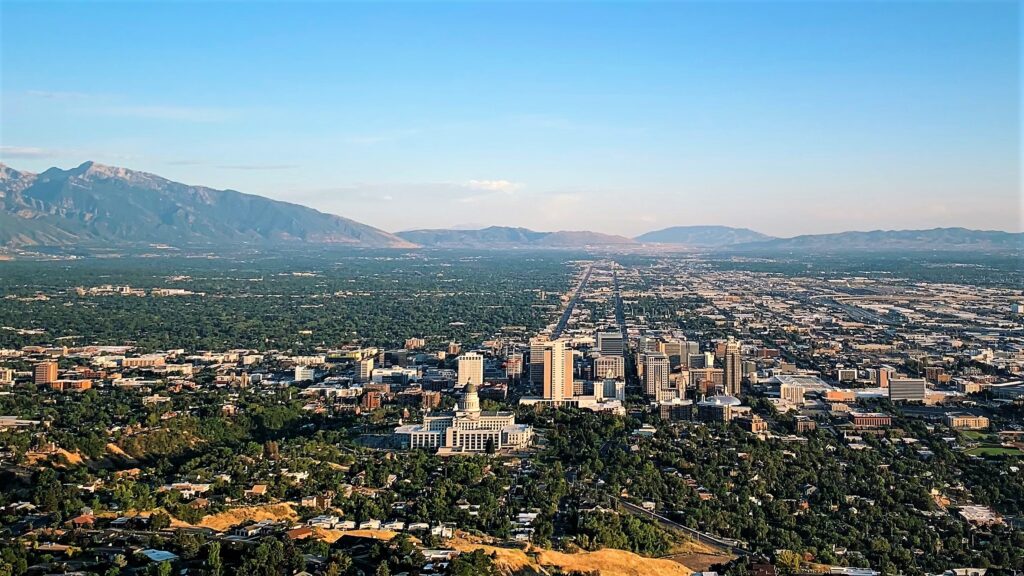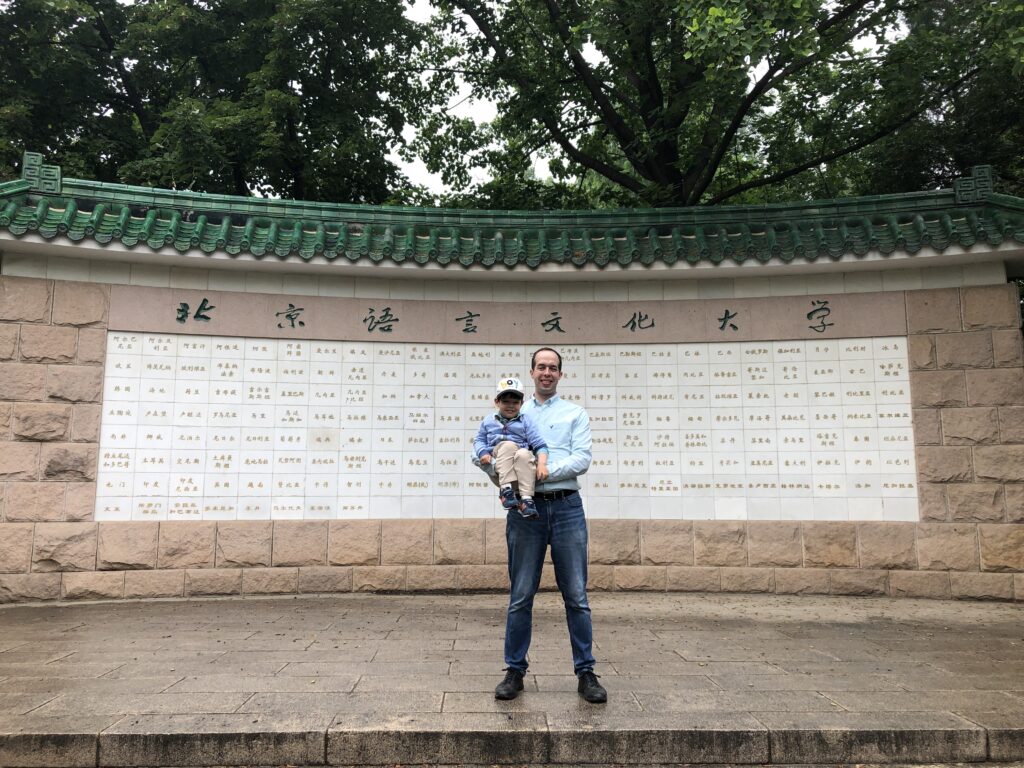Beijing Daily, an online newspaper, interviewed me to get my thoughts about Beijing’s Central Axis, now a UNESCO World Heritage Site. You can read the article in Chinese here:
I provided the below blog post and Q&A to the reporter.
BLCU’s foreign teachers experience Beijing’s spectacular city design
Nick Lambson
高级外教
July 1, 2023
BLCU arranged for its foreign teachers to visit the Drum Tower, the Grand Canal, and Jing Shan Park in central Beijing. An expert from the Beijing Municipal Commission of Planning and Natural Resources explained the significance of Beijing’s Bell and Drum towers.
The Bell and Drum Towers in Beijing were used to announce the time of day. The Drum Tower was used to keep time during the night hours, while the Bell Tower kept time during the day. The towers were also used to signal other events, such as the opening and closing of the city gates, the start and end of work hours, and the time for curfew. They were also used to announce important news, such as the death of an emperor or the start of a war.
In addition to their practical functions, the Bell and Drum Towers were also important symbols of Beijing’s power and authority. They were located on the central axis of the city, which was the most important axis in Chinese geomancy.
Percussionists took the stage to give us a thundering demonstration of the massive drums!
We then strolled south along the water’s edge of Qianhai reservoir, dazzled by the afternoon sun gleaming off the water’s surface. Another expert showed us the Grand Canal, a UNESCO World Heritage Site and the longest artificial waterway in the world. She explained that the Grand Canal is a testament to the ingenuity and engineering skills of the Chinese people. The Song dynasty government official and engineer Qiao Weiyue put his invention of the pound lock to good use in the Grand Canal, allowing control of the water level in the canal. Boats could now travel through sections of the canal that were at different elevations. The Grand Canal furthered economic development and remains in heavy use today by barges carrying bulk materials and containers.
After admiring the engineering marvel of the Grand Canal, we hiked up the hill of Beijing’s Jing Shan Park, once a private imperial garden for the emperors of the Ming and Qing dynasties. Arriving at the top of the hill, it’s easy to see why this was a favorite spot of emperors. The panoramic views were jaw-dropping. To the south, the hot summer sun radiated down on the orange roofs of the Forbidden City, accentuating the orderly and often symmetrical urban planning. To the east, the China World Trade Center and the CCTV Tower sparkled in the bright sunlight. To the west, the White Pagoda jutted out from Beihai park. Far in the distance, the clear air afforded a view of the Western Hills, a mountain range west of Beijing.
After an exhilarating excursion, we welcomed the opportunity to relax on the cool bus as we rode back to the restaurant on the fifth floor of BLCU’s canteen to enjoy a Beijing classic: Peking roast duck. The conversation was lively, the drinks were refreshing, and the food was sumptuous and filling.
Q&A
1、您在昨天参观北京中轴线的活动中,印象最深刻的地方是什么?为什么?
During yesterday’s visit to the Central Axis of Beijing, what was the place you were most impressed and why?
At the top of the hill at Jing Shan Park, I marveled at Beijing’s orderly city layout. That moment, I had a flashback of my hometown, Salt Lake City. Both Beijing and Salt Lake City were designed on a grid around a central axis. The similarities are striking.
Beijing’s Central Axis and the Forbidden City is at its center, whereas Salt Lake City straddles Main Street, with Temple Square at its center. Beijing’s Jing Shan Park and Salt Lake City’s Ensign Peak both serve as vantage points with spectacular views.
| Beijing | Salt Lake City | |
| City Layout | Grid system | Grid system |
| Central Axis | The Central Axis | Main Street |
| Central Point | The Forbidden City | Temple Square |
| Vantage Point | Jing Shan Park | Ensign Peak |
2、您参观过北京的其他景点吗?
Have you ever been to other scenic spots in Beijing? What are they?How do you feel?
Last October, my wife and I celebrated our wedding anniversary at the Fragrant Hills. The red leaves were a symbolic testament to the monumental events that happened there in both ancient and modern China. I feel at home in the mountains, and was delighted to see the landmarks of the Fragrant Hills preserved so well.
3、您喜欢北京吗?为什么喜欢?
Do you like Beijing? Why?
Beijing is a model for any city with a traditional past adapting to a vibrant future. Beijing’s modern conveniences are a marvel, but what’s even more impressive is maintaining Beijing’s traditional character throughout its technological growth. I especially enjoy being a teacher at Beijing Language and Culture University, known as the “Little United Nations” for all of the foreign students who come to study Chinese here. Beijing’s Central Axis symbolizes the balance between its traditional heritage and vibrant future, between its role as the Chinese capital and a global crossroads.
4、您是否了解北京对老城保护的一些故事,您如何看待北京对历史文化的保护?
Do you know some stories of the protection of the old city of the Beijing? What do you think of the historical and cultural protection of the Beijing?
When my family visited Beijing in 2019, I took them to Lama Temple (Yonghegong). The temple is well-preserved and is an exceptional example of Tibetan Buddhist architecture and culture. It’s recognized as a UNESCO World Heritage Site, and is staffed by professional conservators who maintain the temple’s buildings and artefacts. I applaud Beijing’s efforts to preserve cultural and historical sites like Lama Temple and the Central Axis.
5、北京目前正在为北京中轴线申请世界遗产,请您给中轴线申遗说一些祝福。
Beijing is now applying for a World Heritage site for the Central Axis. Do you have any blessings?
Beijing’s Central Axis definitely deserves consideration as a World Heritage site. Although several other cities have a central axis, only Beijing’s Central Axis is an incarnation of a philosophical principle, the Chinese virtue of the Golden Mean. It is an embodiment of the uniquely Chinese emphasis on social order, philosophy, and urban planning. I sincerely hope to see Beijing’s Central Axis join Beijing’s other monuments as a formally recognized UNESCO World Heritage site. I invite visitors to Beijing to experience the spectacular symmetry of Beijing’s Central Axis from the top of Jing Shan Park.
6、方便问一下您的妻子来自中国哪个城市吗?
Which city is your wife from in China?
My wife is from Tianjin. Just a half-hour train ride away, we visit Tianjin frequently. Tianjin has developed its own fresh, modern style on the Haihe river, incorporating accents of Western architecture. I look forward to the further integration of Tianjin into the Beijing-Tianjin-Hebei capital economic circle, which will certainly bring abundant opportunities and growth for everyone in the region.
About Nick Lambson
Nick Lambson is a Senior Foreign Teacher at Beijing Language and Culture University (BLCU), where he teaches translation technology and computer programming. He and his wife SUN Chang, who teaches at Beijing Foreign Studies University, have lived in Beijing for five years with their two kids. Nick is also the ambassador of the Beijing chapter of LocLunch, a monthly meetup for Beijing’s translation and localization professionals. Nick enjoys Beijing’s four seasons, Olympic heritage, and rich history, similar to his hometown of Salt Lake City, Utah, USA. Nick and his colleagues at BLCU contributed to the Beijing 2022 Olympic Winter Games by building a multilingual winter sport terminology platform. Nick graduated with an M.A. in Translation and Localization Management from the Middlebury Institute of International Studies at Monterey, and a B.M. in Sound Recording Technology and a double major in Russian from Brigham Young University.











